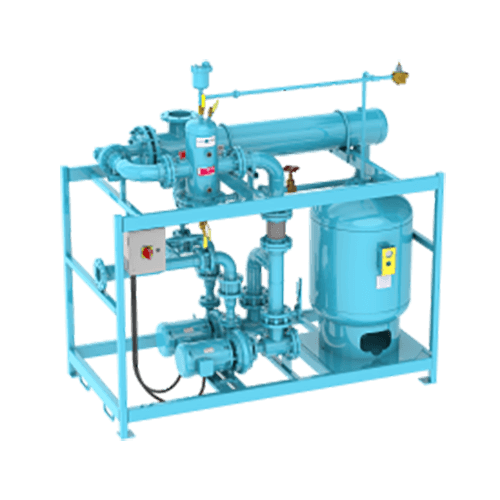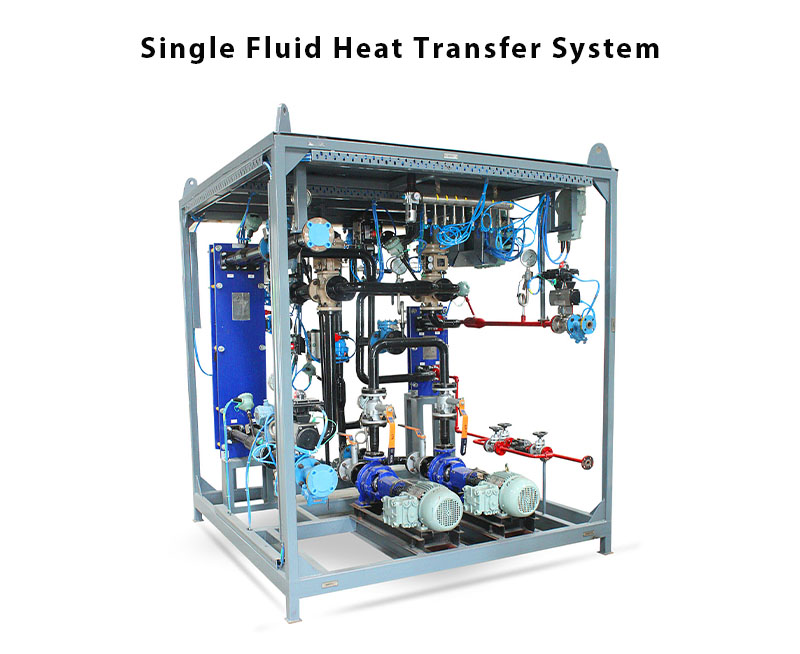A Deep Dive into Advanced CFD Modeling in DVS Heat Transfer Systems
Exploring the Benefits and Applications of Heat Transfer Equipments in Modern Sector
Heat transfer systems play a necessary duty in modern-day sector. They encompass various devices such as convection, conduction, and radiation, each adding to reliable thermal management. Industries like production and aerospace advantage greatly from these systems. As improvements proceed, the integration of ingenious materials and modern technologies assures to boost energy efficiency. This evolution elevates essential concerns about the future implications for sustainability and functional costs throughout several sectors. What exists ahead in this recurring improvement?
Comprehending Heat Transfer Principles
Heat transfer principles are basic to the operation of different industrial systems. These concepts incorporate the systems of convection, conduction, and radiation, each playing an important role in handling thermal power. Comprehending transmission includes analyzing how Heat relocates with strong materials, while convection concern Heat transfer in fluids, driven by liquid activity. Radiation, unique from the various other two, includes power transfer via electromagnetic waves. The effectiveness of Heat transfer influences system efficiency, energy intake, and overall efficiency. Reliable thermal monitoring is necessary in processes such as heating, Heat, and air conditioning recovery. By mastering these principles, sectors can maximize their operations, lower energy expenses, and improve tools longevity, thus contributing to a much more sustainable and effective industrial landscape.
Secret Sorts Of Heat Transfer Systems
While various markets use Heat transfer systems for varied applications, a number of key types attract attention because of their details functions and effectiveness. The most typical kinds include radiation, convection, and transmission systems. Transmission systems transfer Heat with direct get in touch with between materials, making them efficient in solid-state applications. Convection systems, on the various other hand, utilize liquid activity to move Heat, suitable for home heating or cooling down fluids and gases. Radiation systems operate without a medium, depending on electromagnetic waves to move Heat, perfect for high-temperature settings. Each kind serves distinct purposes, permitting sectors to customize their Heat transfer solutions based on operational demands, energy performance, and cost-effectiveness. Recognizing these systems is crucial for maximizing performance in various industrial setups.
Industrial Applications of Heat Transfer Technologies
The application of Heat transfer innovations in industry plays a vital duty in boosting power effectiveness and maximizing processes. DVS Heat Transfer Systems. By executing advanced Heat exchange systems, companies can greatly lower their environmental influence while enhancing overall productivity. This assimilation not only cultivates sustainability however also lines up with modern regulative and consumer demands for greener methods
Energy Efficiency Improvements
As industries significantly prioritize sustainability, energy effectiveness enhancements in Heat transfer technologies have come to be important for decreasing functional costs and ecological impact. Improved Heat exchangers, as an example, use sophisticated materials and styles to take full advantage of thermal efficiency while reducing power intake. Integrating variable speed drives in pumping systems permits for better control of fluid flow, leading to considerable power savings. The implementation of wise sensing units and automation provides real-time tracking, allowing changes that maximize energy use. Additionally, waste Heat recuperation systems record excess thermal power, transforming it right into usable power. These improvements not just boost power efficiency but also add to a much more sustainable industrial landscape by reducing greenhouse gas discharges and sustaining conformity with ecological regulations.
Process Optimization Techniques
Process optimization techniques are crucial in enhancing the effectiveness and performance of Heat transfer innovations in commercial applications. These strategies entail refining procedures to take full advantage of Heat transfer efficiency while minimizing power usage and operational prices. Approaches such as computational fluid dynamics (CFD) modeling allow designers to assess and replicate Heat transfer situations, recognizing locations for enhancement. Additionally, real-time surveillance systems can give useful information on temperature level gradients and circulation rates, enabling changes that enhance efficiency. Additionally, implementing advanced control techniques, such as predictive analytics, can boost system responsiveness to differing operational demands. By using these optimization techniques, sectors can achieve better thermal effectiveness, reduced downtime, and enhanced product quality, eventually resulting in raised competitiveness in the industry.

Environmental Effect Reduction
While industrial Heat transfer modern technologies are necessary for operational effectiveness, their application also provides possibilities for significant environmental effect decrease. By improving power performance, these systems reduce gas consumption, resulting in reduced greenhouse gas emissions. Advanced Heat exchangers can recoup waste Heat, rerouting it to preheat incoming fluids, consequently lowering energy requirements. Furthermore, the assimilation of Heat transfer innovations in eco-friendly power systems, such as solar thermal and geothermal applications, supports the shift to lasting techniques. Industries that utilize these modern technologies additionally gain from decreased operational expenses and boosted governing compliance. On the whole, the tactical execution of Heat transfer systems not only boosts productivity however likewise promotes a much more sustainable commercial landscape, adding to international ecological objectives.
Benefits of Effective Heat Transfer Solutions
Efficient Heat transfer systems use considerable benefits in contemporary sector, largely via improved energy effectiveness and cost reduction. By optimizing thermal administration, these systems lessen energy waste, resulting in lower functional expenses (DVS Heat Transfer Systems). Organizations can attain higher sustainability and improved profitability.

Energy Efficiency Improvements
As markets increasingly prioritize sustainability and cost-effectiveness, energy efficiency enhancements in Heat transfer systems have arised as an essential emphasis. Enhanced efficiency in these systems causes minimized power intake, making it possible for centers to run even more sustainably. By maximizing Heat transfer methods, sectors can minimize waste Heat and accomplish far better thermal monitoring, substantially decreasing their ecological influence. Breakthroughs in modern technologies such as Heat exchangers and insulation products straight from the source contribute to improved performance and reliability. Applying energy-efficient Heat transfer remedies not just supports compliance with governing standards yet additionally promotes a culture of advancement within organizations. Inevitably, these renovations are necessary in lining up industrial procedures with worldwide energy conservation objectives, leading the way for a much more sustainable future in manufacturing and handling fields.
Expense Reduction Opportunities
By enhancing Heat transfer systems, sectors can expose substantial expense reduction chances that enhance their profits. Efficient Heat transfer minimizes energy consumption, bring about lower energy expenses and minimizing functional expenses. In addition, enhanced system efficiency decreases the demand for upkeep and repairs, in addition saving expenses over time. Enhanced Heat transfer can also expand devices life expectancy, enabling companies to postpone capital investment on substitutes. Waste Heat recuperation systems can transform excess Heat right into usable energy, better driving down expenses. These systems not just improve processes yet additionally add to sustainability efforts, placing firms favorably in a significantly eco-conscious market. In general, the economic benefits of reliable Heat transfer systems are considerable and essential for affordable benefit.
Innovations in Heat Transfer Solutions
Exactly how can modern industry improve its operations through innovative Heat transfer solutions? By taking on advanced materials and modern technologies, industries can substantially boost thermal effectiveness and efficiency. Developments such as nanofluids, which enhance Heat transfer abilities beyond standard liquids, and phase modification materials that save and release thermal energy, are getting grip. Furthermore, the assimilation of wise sensing units and IoT gadgets enables for real-time tracking and optimization of Heat transfer processes, minimizing waste and boosting system responsiveness. Moreover, additive manufacturing techniques allow the production of even more complicated Heat exchangers that optimize area while reducing material usage. Jointly, these developments drive operational efficiency and create competitive advantages in different fields, including aerospace, energy, and production.
The Function of Heat Transfer in Sustainability Efforts
While the push for sustainability proceeds to improve markets, the role of Heat transfer modern technologies comes to be increasingly crucial in achieving environmental goals. Efficient Heat transfer systems facilitate power effectiveness by optimizing thermal management in different procedures, significantly decreasing power consumption and greenhouse gas exhausts. For instance, progressed Heat exchangers are made use of in commercial applications to recover waste Heat, thus decreasing power waste. Furthermore, technologies such as phase modification products boost thermal storage space, contributing to sustainable energy assimilation. Furthermore, the fostering of lasting fluids in Heat transfer systems can lower environmental impact. By prioritizing effective Heat transfer, industries not just improve functional efficiency but likewise line up with international sustainability efforts, cultivating a cleaner, more sustainable future.
Often Asked Concerns
Just How Do Heat Transfer Solutions Effect Power Costs in Manufacturing?
Heat transfer systems significantly affect power prices in production by improving effectiveness, decreasing waste, and optimizing thermal management. These renovations cause decrease functional costs, ultimately benefiting general productivity and earnings in industrial operations.
What Maintenance Is Required for Heat Transfer Equipments?
Upkeep for Heat transfer systems includes regular inspections, cleansing of parts, examining liquid degrees and problems, changing used parts, and ensuring proper insulation. These actions boost effectiveness, prolong life-span, and stop costly failures in procedure.
Exist Safety And Security Concerns With Heat Transfer Equipments?
Security worry about Heat transfer systems include possible leakages, stress build-up, and thermal threats. Correct layout, regular maintenance, and adherence to safety and security procedures are vital to minimize these risks and ensure secure operation in industrial environments.
How Can I Select the Right Heat Transfer System for My Service?
Selecting the right Heat transfer system includes evaluating aspects such as effectiveness, application demands, spending plan constraints, and safety and security criteria. A thorough evaluation of these elements will assist ensure suitable efficiency and integrity in service operations.
What Are Typical Failures in Heat Transfer Systems and Their Causes?

Understanding conduction includes examining just how Heat moves with strong materials, while convection pertains to Heat transfer in liquids, driven by fluid movement. i loved this By enhancing Heat transfer methods, industries can reduce waste Heat and attain far better thermal monitoring, greatly reducing their ecological influence. Waste Heat healing systems can transform excess Heat into useful energy, better driving down costs. Progressed Heat exchangers are used in commercial applications to reclaim waste Heat, consequently minimizing power waste. Usual failings in Heat transfer systems consist of leakages, rust, and ineffective Heat exchange.